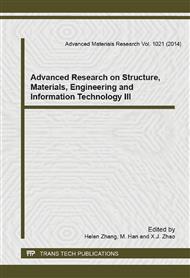p.3
p.7
p.11
p.15
p.20
p.25
p.29
p.33
Preparation and Properties of Polysiloxane Modified Epoxy Encapsulating Material
Abstract:
In order to solve the poor toughness, fatigue durability and shock resistance defects of the cured epoxy resin, in this paper, the epoxy resin was modified via dichlorodiphenyl silane as a modifier. Then the electronic packaging materials were prepared using the modified EP as matrix, a nitrile rubber (CTBN) as a toughening agent, methyl nadic anhydride (MNA) as a curing agent, and 2, 4, 6 - tris (dimethyl amino methyl) phenol as a curing accelerator. The effects of raw materials ratio on the cured products’ properties was investigated. FT-IR, TG-DTG and DMA were used to test and characterize the product. And we determined the best raw materials ratio and reaction conditions. Finally epoxy encapsulating materials which have excellent mechanical properties, electrical properties were prepared.
Info:
Periodical:
Pages:
3-6
Citation:
Online since:
August 2014
Authors:
Price:
Сopyright:
© 2014 Trans Tech Publications Ltd. All Rights Reserved
Share:
Citation:


